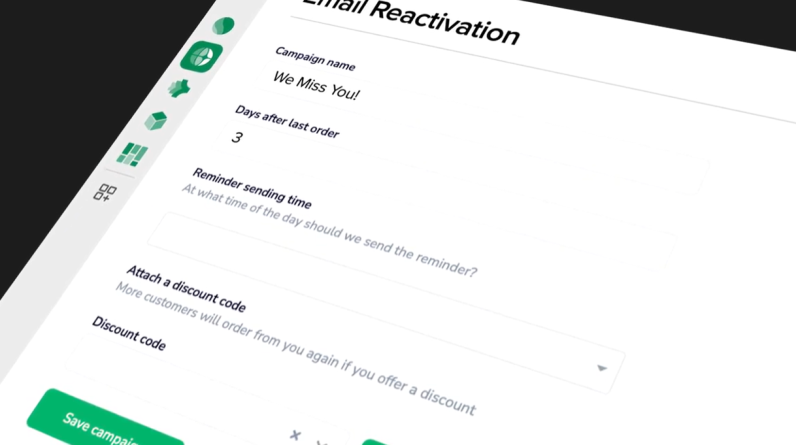
In the today’s rapidly evolving technological landscape, it’s easy to feel overwhelmed by the constant chatter about AI automation. Whether you’re a seasoned tech enthusiast or someone just dipping their toes into automation, the promise of AI can seem both exciting and daunting. Navigating the complexities of AI isn’t just about flipping a switch and letting the magic happen. It’s about crafting a thoughtful strategy that aligns with your unique business needs and goals. In this guide by Mitch Asser, learn nine advanced AI automation tips and techniques that can help you not only keep up with the pace but thrive in it.
Imagine a world where your business operations run like a well-oiled machine, with AI seamlessly handling the mundane tasks, freeing up your time for more creative and strategic endeavors. Sounds dreamy, right? Well, it’s more achievable than you might think. By focusing on building scalable systems and using the right tools, you can transform your AI dreams into reality. To truly harness the power of AI, it’s crucial to adopt a strategic approach that goes beyond simple task automation.
Scalable AI Systems
TL;DR Key Takeaways :
- Focus on building scalable AI systems to enhance adaptability and efficiency, reducing complexity in operations.
- Use API calls for greater control and flexibility, streamlining AI integration and deployment processes.
- Centralize automation management using platforms like Airtable to maintain cohesive and responsive systems.
- Ensure brand consistency by automating updates across workflows, protecting brand integrity across platforms.
- Use multi-model platforms like OpenRouter to optimize AI model selection for diverse task requirements.
Building Scalable Systems: The Foundation of AI Success
In the fast-paced world of AI automation, the focus should be on creating scalable systems rather than isolated workflows. Building robust systems reduces complexity and boosts efficiency, allowing your operations to grow seamlessly. This approach ensures adaptability to new challenges and opportunities without unnecessary complications.
Scalability is not just about handling increased workload; it’s about creating a flexible infrastructure that can evolve with your business needs. Consider these key points:
- Design modular systems that can be easily expanded or modified
- Implement cloud-based solutions for enhanced flexibility and resource allocation
- Regularly assess and optimize your AI processes to maintain efficiency at scale
By prioritizing scalability, you’re not just solving today’s problems—you’re preparing for tomorrow’s opportunities.
Enhance Efficiency with API Calls
To streamline your AI setup, prioritize using API calls over pre-built modules. This strategy minimizes remapping time and speeds up template deployment. By directly interfacing with APIs, you gain greater control and flexibility, allowing more efficient integration of various system components.
API-first approach offers several advantages:
- Faster integration of new tools and services
- Improved customization options to meet specific business needs
- Reduced dependency on third-party software updates
Embracing API calls allows you to create a more agile and responsive AI ecosystem, capable of adapting quickly to new requirements and technologies.
Advanced AI Automation Tips
Expand your understanding of AI Automation with additional resources from our extensive library of articles.
Centralize Automation with a Strong Foundation
Platforms like Airtable serve as a centralized hub for managing your automation needs. By effectively referencing AI models and managing updates, you maintain a cohesive and responsive system. Centralized control allows you to oversee operations precisely, making sure all elements work in harmony.
Key benefits of centralization include:
- Improved data consistency across different AI processes
- Easier monitoring and management of multiple AI workflows
- Streamlined troubleshooting and system maintenance
A strong, centralized foundation is essential for maintaining order and efficiency in complex AI systems.
Maintain Brand Consistency with Automation
A consistent brand voice is crucial for any organization. By using linked records, you can automate updates across workflows, making sure adherence to brand guidelines at all times. This not only enhances efficiency but also protects your brand’s integrity across different platforms and channels. Consider these strategies for maintaining brand consistency:
- Create a centralized brand asset library accessible by AI systems
- Implement automated checks for brand compliance in AI-generated content
- Regularly update and refine your brand guidelines within the AI framework
Automation can be a powerful tool in maintaining a cohesive brand identity, even as your AI systems scale and evolve.
Optimize with Multi-Model Platforms
Platforms like OpenRouter provide access to a variety of AI models, allowing you to optimize model selection based on specific task requirements. Using multi-model platforms allows you to tailor AI solutions to meet diverse needs, enhancing both performance and accuracy.
Multi-model optimization offers several advantages:
- Flexibility to choose the best AI model for each specific task
- Improved overall system performance by using specialized models
- Cost-effectiveness through efficient resource allocation
By using multi-model platforms, you can create a more versatile and efficient AI ecosystem.
Create a Dynamic Prompt Library
Centralizing prompts for reuse across workflows can significantly boost efficiency. By developing a prompt library, you can customize outputs and create feedback loops that refine results over time. This ensures your AI systems remain adaptable and responsive to changing demands. Key steps in creating an effective prompt library:
- Categorize prompts based on use cases and AI models
- Implement version control to track prompt evolution
- Establish a review process to continually refine and optimize prompts
A well-maintained prompt library serves as a valuable resource, enhancing the consistency and quality of AI-generated outputs.
Simplify Operations with AI
AI is a powerful tool for reducing operational complexity. By consolidating workflows and automating data management, you can streamline processes and improve overall efficiency. This strategy saves time and enhances the accuracy and reliability of your operations. Focus on these areas to simplify operations:
- Identify repetitive tasks suitable for AI automation
- Implement AI-driven data analysis to inform decision-making
- Use AI to automate routine customer interactions and support
By strategically applying AI to simplify operations, you can free up valuable resources for more complex, high-value tasks.
Improve User Experience with Interface Filtering
Effective interface filtering is essential for managing and displaying relevant prompts and data. By simplifying the user experience, you assist training and improve user engagement. Optimized filtering ensures users can quickly access the information they need, boosting productivity. Consider these strategies for effective interface filtering:
- Implement intuitive search and filter options
- Use AI to predict and suggest relevant information to users
- Regularly gather user feedback to refine and improve filtering mechanisms
A well-designed interface with efficient filtering can significantly enhance the usability and effectiveness of your AI systems.
Carefully Assess Platform Changes
When considering platform changes, weigh time against cost. Focus on long-term efficiency and business growth rather than minor savings. By carefully evaluating platform changes, you ensure your systems remain robust and capable of supporting your strategic objectives. Key considerations when assessing platform changes:
- Evaluate the long-term impact on scalability and performance
- Consider the cost and time required for staff training and system integration
- Assess compatibility with existing AI workflows and data structures
Thoughtful assessment of platform changes is crucial for maintaining a stable and efficient AI automation ecosystem. By implementing these strategies, you can create a robust, scalable, and efficient AI automation system that drives your organization forward. Remember, the key to success in AI automation lies not just in adopting new technologies, but in strategically integrating them into your existing processes and continuously optimizing for long-term growth and efficiency.
Media Credit: Mitch Asser
Filed Under: AI, Top News
Latest Geeky Gadgets Deals
If you buy something through one of these links, Geeky Gadgets may earn an affiliate commission. Learn about our Disclosure Policy.
Originally Appeared Here






